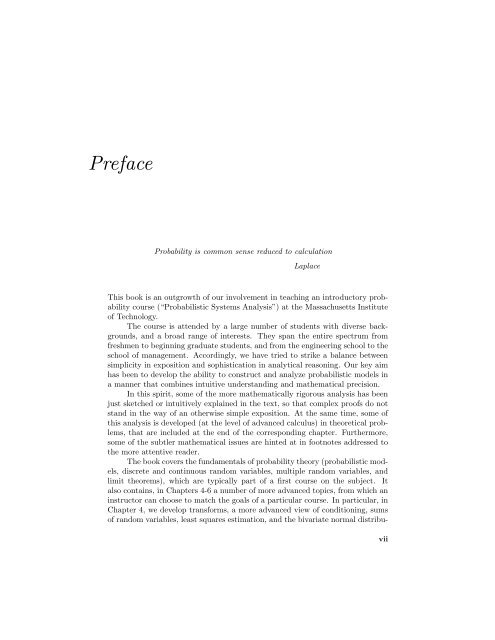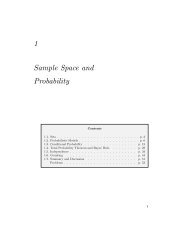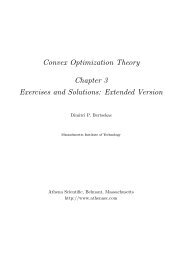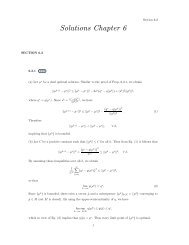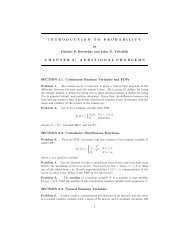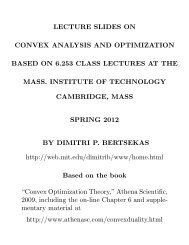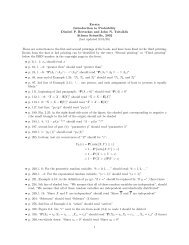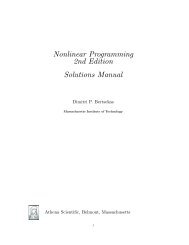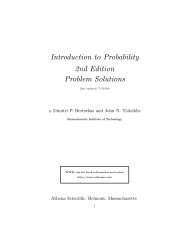Introduction to Probability, by Dimitri P ... - satrajit mukherjee
Introduction to Probability, by Dimitri P ... - satrajit mukherjee
Introduction to Probability, by Dimitri P ... - satrajit mukherjee
Create successful ePaper yourself
Turn your PDF publications into a flip-book with our unique Google optimized e-Paper software.
Preface<br />
<strong>Probability</strong> is common sense reduced <strong>to</strong> calculation<br />
Laplace<br />
This book is an outgrowth of our involvement in teaching an introduc<strong>to</strong>ry probability<br />
course (“Probabilistic Systems Analysis”) at the Massachusetts Institute<br />
of Technology.<br />
The course is attended <strong>by</strong> a large number of students with diverse backgrounds,<br />
and a broad range of interests. They span the entire spectrum from<br />
freshmen <strong>to</strong> beginning graduate students, and from the engineering school <strong>to</strong> the<br />
school of management. Accordingly, we have tried <strong>to</strong> strike a balance between<br />
simplicity in exposition and sophistication in analytical reasoning. Our key aim<br />
has been <strong>to</strong> develop the ability <strong>to</strong> construct and analyze probabilistic models in<br />
a manner that combines intuitive understanding and mathematical precision.<br />
In this spirit, some of the more mathematically rigorous analysis has been<br />
just sketched or intuitively explained in the text, so that complex proofs do not<br />
stand in the way of an otherwise simple exposition. At the same time, some of<br />
this analysis is developed (at the level of advanced calculus) in theoretical problems,<br />
that are included at the end of the corresponding chapter. Furthermore,<br />
some of the subtler mathematical issues are hinted at in footnotes addressed <strong>to</strong><br />
the more attentive reader.<br />
The book covers the fundamentals of probability theory (probabilistic models,<br />
discrete and continuous random variables, multiple random variables, and<br />
limit theorems), which are typically part of a first course on the subject. It<br />
also contains, in Chapters 4-6 a number of more advanced <strong>to</strong>pics, from which an<br />
instruc<strong>to</strong>r can choose <strong>to</strong> match the goals of a particular course. In particular, in<br />
Chapter 4, we develop transforms, a more advanced view of conditioning, sums<br />
of random variables, least squares estimation, and the bivariate normal distribuvii


